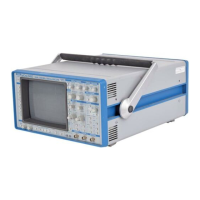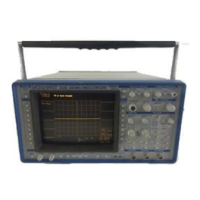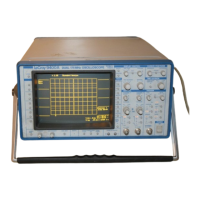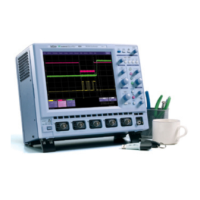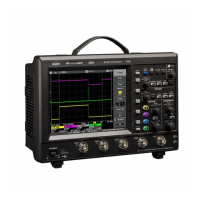B–1
B
Appendix B: Enhanced Resolution
Enhanced Resolution Filtering
The available sampling rate of LeCroy oscilloscopes is
often higher than that required for the analyzed signal’s
bandwidth. Oversampling, particularly pronounced in the
long-memory models, can be used to increase the
displayed trace’s effective resolution: the ability of the
instrument to distinguish closely spaced voltage levels.
This is done by filtering the digitized signal using
Enhanced Resolution, available in the optional WP02
Advanced Math Package.
Although similar to signal smoothing using a simple moving-
average filter, enhanced resolution filtering is more efficient both
in terms of bandwidth and the superior passband characteristics
that result. And on waveforms with single-shot characteristics, it
can be used instead of successive trace averaging.
Advantages Enhanced resolution filtering improves two important
characteristics of the oscilloscope.
Resolution is improved by a fixed amount for each filter. This
true increase in resolution occurs whether or not the signal is
noisy, or whether a single-shot or repetitive signal.
Signal–to–noise ratio (SNR) is improved in such a way as to be
dependent on the form of the noise in the original signal. This is
because the enhanced resolution filtering decreases the
bandwidth of the signal, therefore filtering out some of the noise.
Implementation The oscilloscope’s set of constant-phase, FIR (Finite Impulse-
Response filters provide fast computation, excellent step
response in 0.5 bit steps, and minimum bandwidth reduction for
resolution improvements of between 0.5 and 3 bits. Each step
corresponds to a bandwidth reduction of a factor of two, allowing
easy control of the bandwidth/resolution trade-off. The
parameters of the six filters are given in the following table:
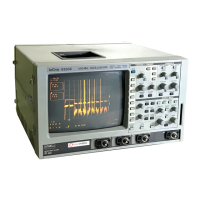
